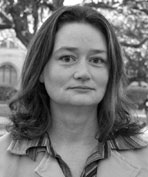ALAN v36n2 - From the Editors

From the Editors
As the seasons shift, we can sense other changes—across the nation and in our classrooms, as well. And quality young adult literature is in the middle of it all. The genre is reaching out to more and more young people, who are finding their own diverse voices in the pages of the texts.
In this winter issue, we address a variety of voices—a chorus demonstrating that young adult literature is providing an engaging connection for adolescents in the classroom and beyond.
Kicking off this issue, authors Wendy J. Glenn, Danielle King, Kate Heintz, Jill Klapatch, and Erica Berg share “Finding Space and Place for Young Adult Literature: Lessons from Four First-Year Teachers Engaging in Out-of-School Professional Induction,” the story of four first-year teachers and their efforts to get young adult literature into their students’ hands.
Heidi L. Hallman emphasizes using young adult literature with a more specific audience in “Novel Roles for Books: Promoting the Use of Young Adult Literature with Students at a School for Pregnant and Parenting Teens.” Hallman’s research describes how such literature offers relevant storylines that engage the students.
“Literacy Letters: Comparative Literature and Formative Assessment” by Nancy Frey, Douglas Fisher, and Kelly Moore explains an approach to assist educators in pairing engaging young adult literature and classics that are in the traditional secondary literature canon and literacy letters that provide an opportunity for students to respond.
Also in this issue, Judith K. Franzak shares “Social Upheaval and Psychological Scarring: Exploring the Future in Meg Rosoff’s How I Live Now .” Donna Adomat writes about the transformation of two characters who become physically disabled in “Issues of Physical Disabilities in Cynthia Voigt’s Izzy, Willy-Nilly and Chris Crutcher’s The Crazy Horse Electric Game .”
Authors Wanda Brooks and Lorraine Savage examine the growing genre of street literature in “Critiques and Controversies of Street Literature: A Formidable Literary Genre.” They suggest that this genre receive more scholarly attention based on its increasing popularity with adolescent readers. In another article addressing student engagement, Dwayne Jeffery discusses a list of specific titles and authors to help get adolescent males reading. Check out his suggestions in “Reaching Reluctant Readers (aka Books for Boys).”
Longtime young adult literature enthusiast/critic Patty Campbell tells of the development of scholarship in the field of young adult literature in “Twayne and Scarecrow: An Editor’s Memoir.” Additionally, Bryan Ripley Crandall shares how students can use young adult literature to explore how “normal” and “able” are portrayed in texts in “Adding a Disability Perspective When Reading Adolescent Literature: Sherman Alexie’s The Absolutely True Diary of a Part-Time Indian .”
In “Roses Are Red: Taking a Leap of Faith: The High School Connection,” Kay A. Smith shares her results and analysis of a survey of teens about faith and religion and literature. Additionally, we offer an article by KaaVonia Hinton-Johnson that features an interview with Sharon M. Draper and addresses how teachers—through the use of young adult literature—can reach reluctant readers.
Helen Bittel’s article, “From Basketball to Barney: Teen Fatherhood, Didacticism, and the Literary in YA Fiction,” takes a look at how young adult literature—such as Angela Johnson’s The First Part Last —has portrayed teen pregnancy.
Additionally, check out the more than 30 reviews of current young adult literature in our Clip and File section to see what other educators recommend for your classrooms.
And, now, we offer a brief introduction to The ALAN Review ’s new coeditors: Steven Bickmore, Louisiana State University; Melanie Hundley, Vanderbilt University; and Jacqueline Bach, Louisiana State University. They will be transitioning into their new roles with the summer Review and be officially taking charge for the fall 2009 issue. We welcome them to the ALAN family and wish them well in their ALAN Review endeavors.

Steven Bickmore , Louisiana State University. Robert Cormier’s I Am the Cheese changed how I view novels written for young adults. I realized that the characters, plot, and narrative structure of this novel are as sophisticated as most of the books I read as an English major. This finely crafted piece of literature grips the reader in a tale of suspense, and convinced me that young adult literature could not only help young readers learn to read and digest high-quality “classic” literature, but that many of these novels are quality literature in their own right.
I spent 25 years teaching English—everything from 9th-grade remedial to 12th-grade AP. At every level, I included YA literature as self-selected literature, literature circle options, or as whole-class readings. One year, I placed Ender’s Game as the first novel in a Senior Advanced Placement class, and that changed the discussion of literature throughout the entire year. My research agenda includes investigating how preservice teachers come to YA Literature and what pedagogy they adopt in the classroom. I also write about promoting YA literature that not only speaks to its audience, but also exhibits high literary quality. I now teach English Methods and Young Adult Literature courses at Louisiana State University.

Melanie Hundley , Vanderbilt University. I fell in love with young adult literature during my first year of teaching seventh grade at a middle school in Georgia. It was a textbook adoption year, so when some of the textbooks were damaged, they were not replaced. I didn’t have enough textbooks for my students; what I did have was a terrific media specialist who helped me get class sets of young adult novels. Reading Where the Red Fern Grows, A Wrinkle in Time, Dogsong, Number the Stars , and Bridge to Terabithia with my students gave me a very different perspective on those texts. Those reading experiences and our deep, thoughtful discussions helped me reshape what I thought about literature, about teaching literature, and what texts were key to use with students.
As a classroom teacher, I used young adult literature in a variety of ways, including reading workshops, as companion pieces to canonical literature, and in writing workshops as examples of the writer’s craft. From 7th grade to AP, it engaged students in reading, writing, and critiquing the world. I now teach Writing Methods and Young Adult Literature courses at Vanderbilt University. My research interests include new media, technology and writing, and teacher education.

Jacqueline Bach , Louisiana State University. My first ALAN Conference in 1994, along with guidance from Dr. Pamela Sissi Carroll and Gloria Pipkin, convinced me to read young adult literature with my students. One year, after an especially grueling Julius Caesar unit and an obligatory week of state standardized testing, I gave my students two weeks to read whatever young adult novel(s) they wanted in order for them to “remember what they liked about reading.” Afterwards, my students pleaded: “Why can’t we read books like this all of the time?” I now share that comment with my preservice English teachers in the hopes that they, too, will listen to their students.
Since then, I have taught high school English in three states and a YA Lit course, facilitated book clubs whose members read young adult novels, and worked with teachers on incorporating YA Lit into their curriculums. My current research with YA Literature explores how it can be used to conduct professional development with teachers on social issues and how it represents transgender and gender-variant characters. I am in the process of introducing young adult literature to school counselors and administrators in the hopes that they can also benefit from what we know about this field.